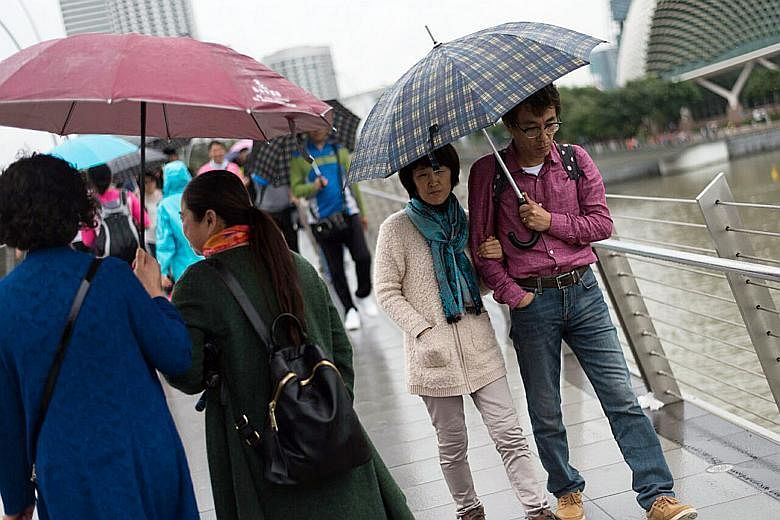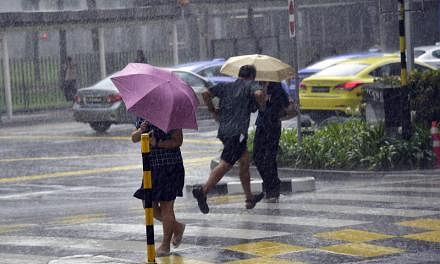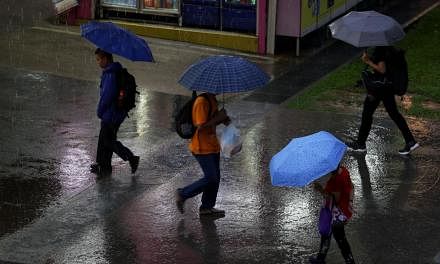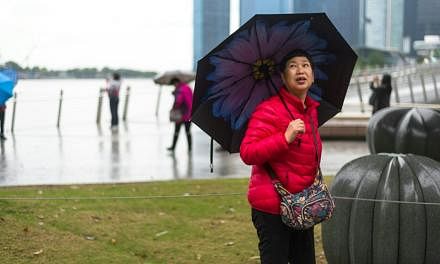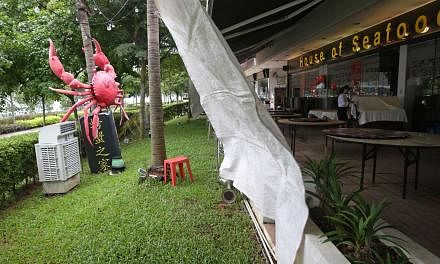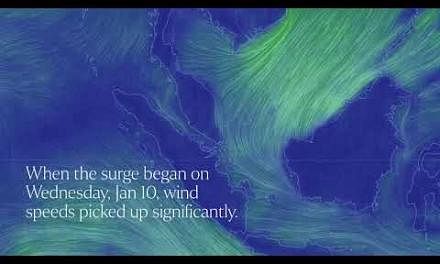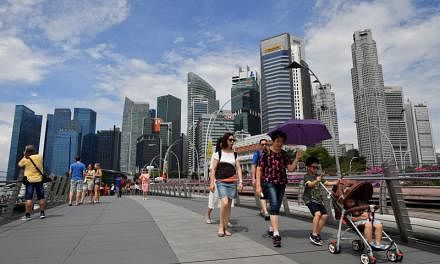It's been cooler over the past week, delighting many but also perplexing others who wonder why the mercury levels vary across the island.
The answer: A mix of factors, including cloud cover and rainfall, has a cooling effect in areas where they persist.
The Meteorological Services Singapore (MSS) said temperatures are lower in rainy, windy areas that have greater cloud cover, which reduces the heating effect of sunshine. "A combination of factors influences the temperature over different parts of Singapore," said the MSS spokesman yesterday, in response to queries from The Sunday Times.
In addition, coastal areas experience cooling sea breezes during the day, while the urban-heat island effect in built-up areas causes temperatures in these places to climb at night, as heat is released from buildings, roads and vehicles.
Climate scientist Erik Velasco, from the Singapore-MIT Alliance for Research and Technology, said the urban-heat island effect can result in a temperature difference of up to 5 deg C between urban and rural areas at night.
"In locations such as Orchard Road, with tall buildings and high electricity consumption, this temperature difference can reach up to 7 deg C," Dr Velasco added.
The variability in these factors means there are no particular "hot spots" or "cold spots" on the island, the MSS spokesman said.
This is apparent from the fluctuations in temperature experienced in different parts of Singapore.
For example, as at 5pm yesterday, Newton was the coolest spot in Singapore with a temperature of 21.7 deg C, while Jurong Island was the warmest at 23.9 deg C. On Friday, though, it was Jurong West that was the coolest, with a temperature of 21.4 deg C. The warmest reading that day was the 24.7 deg C recorded at 4pm on Sentosa.
Overall, the current cool spell in Singapore is the result of an ongoing monsoon surge over the South China Sea.
This weather phenomenon refers to a sudden increase in wind speed, which brings to the island cool air from the winter chill in the northern hemisphere.
But, short-term fluctuations aside, records show that the eastern parts of Singapore have consistently recorded warmer temperatures than the western and central areas.
This trend is clear from climate maps on the National Environment Agency's website, which show the heat signature across different parts of the island on a yearly basis.
"These plots clearly show consistently warmer temperatures in the eastern part of the island compared to the central and western areas," noted Mr Arnold Doray, chief executive of weather modelling company Terra Weather.
This is also due to rain, he added - in particular, how rain tends to fall in Singapore.
Much of the rain here is caused by eastward-moving storm systems known as Sumatra squalls. They generally form over Indonesia's Sumatra island, west of mainland Singapore, then move in a linear fashion eastwards across the Republic.
Mr Doray said: "These systems dump their rain over the central and western parts of Singapore, leaving the east and south-east areas drier by comparison."
He said last Monday's unusual rain event - which resulted in flash floods in the eastern parts of Singapore - was caused by a slow-moving squall line, that triggered widespread thunderstorms over much of the eastern area.

